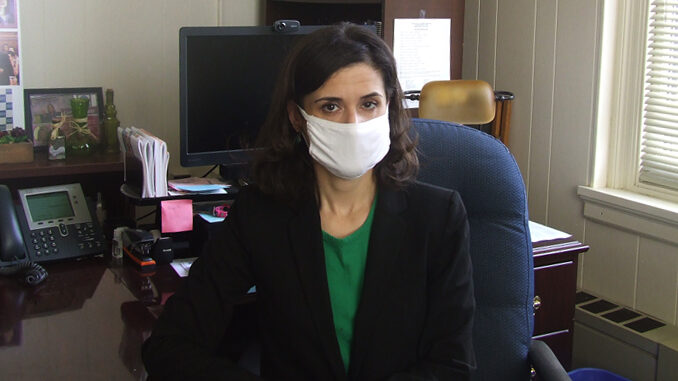
Gelman: History points to 2nd wave
One question changed my entire interview with Dr. Gelman. When she referred to a potential second wave of COVID-19, I was curious. “What makes you think there’s going to be one?” I asked. And her answer filled the balance of our meeting.
Dr. Irina Gelman has been our county health commissioner since moving here two years ago. On Sept. 16, she was still in the field when I arrived early for our appointment. As I waited in her office, I saw pictures of her husband and three children, and an award she won in Fulton County. She had been honored as a New York State Woman of Distinction.
I was going to ask her about the award and about her duties in Goshen when the conversation was sidetracked by the issue of resurgence.
There have been eight major pandemics since the 1700s, she told me, and seven of them have followed the same pattern. They start in China and then spread to the west. Four of the pandemics have occurred since 1900. Most of them have lasted between 18 and 24 months.
“Getting a flu shot is important
Dr. Irina Gelman
like at no other time in history.”
History shows an initial wave of the disease followed by a quiet period of six months. The lull is deceptive because the second wave is more intense than the first. The Spanish flu had its first impact in the early summer of 1918. By August the number of fatalities had dwindled to almost zero. But the pandemic wasn’t finished. The death rate skyrocketed in November, diminished around Christmas and increased for a final time in February.
Dr. Gelman believes we’re seeing that trend again.
The number of COVID cases rose in China in June, climbed in Australia in July, and increased in Europe in August. If the United States follows their example, we could see the disease become more prevalent in the fall, at the same time that we’re battling the flu.
“Getting a flu shot is important,” Dr. Gelman advised, “like at no other time in history.” She also stressed the importance of wearing a mask – not just to get into restaurants and stores, but anytime people are in close contact with one another. The mask should cover the nose, mouth and chin. Mass gatherings should be obsolete until the threat is over.
The possible confluence of COVID and the flu raises the issue of capacity. Dr. Gelman said we have more resources than in the spring, but would we have enough personnel? Would we have a sufficient number of doctors, nurses and EMTs?
But while the prospects are daunting, the results don’t have to follow the trend of other pandemics. A vaccine would change the pattern, and continuing our safety protocols would also make a difference.
People who are tired of wearing a mask would probably be sorry to hear that.
And despite what’s been learned from past pandemics, there are still unanswered questions. Can people build a long-term immunity to COVID? Can they get the disease for a second time? Dr. Gelman shrugged. She said the answer is “maybe.”



